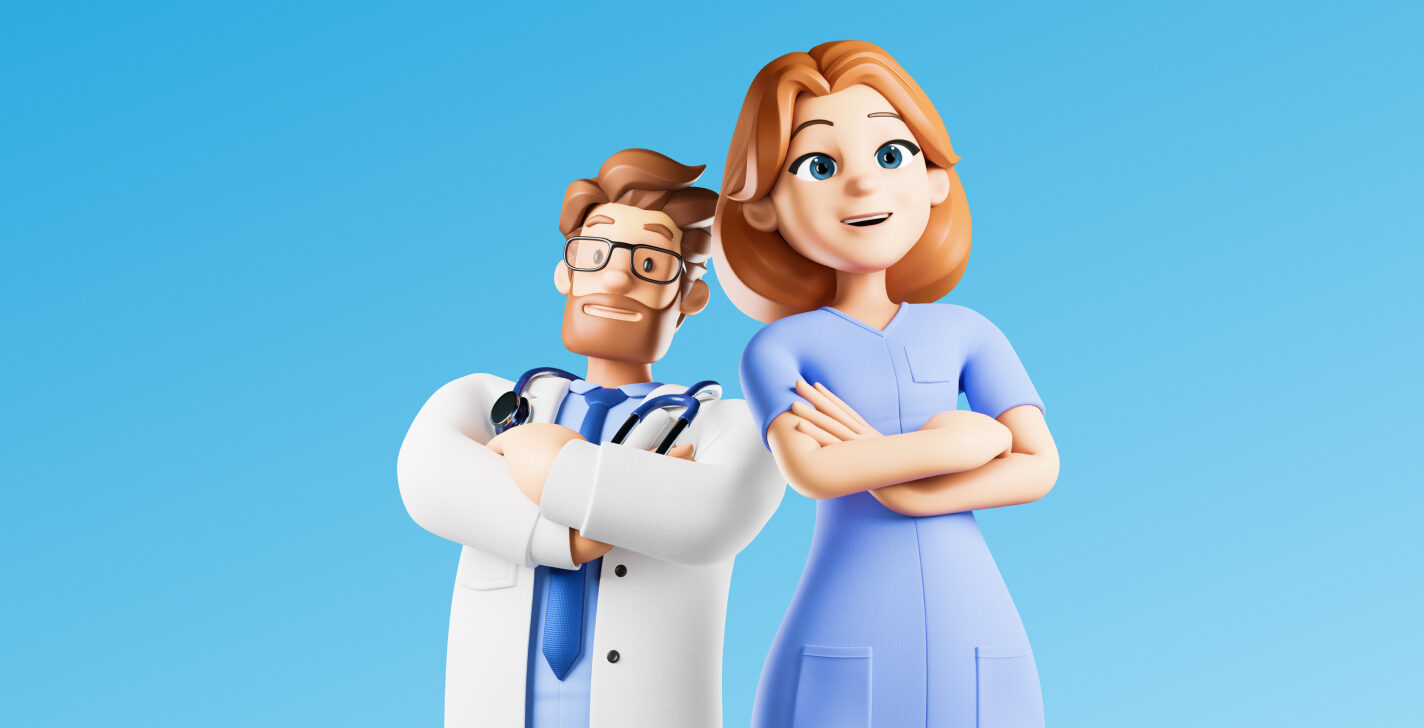
📖 Table of contents
This blog post was written by our medical student in Bratislava, Isabella Raber.
The state examination has been passed and the medical degree in human medicine has finally been completed - this is what all medical students dream of. Wearing a white coat, you walk through the long corridors of the hospital, slightly nervous but happy, breathing in the smell of disinfectant and filtering out the soft beeping of equipment from the background noise. But which ward do you choose and what happens after medical school? This decision is not so easy for everyone, as it determines a large part of your future as a doctor. What helps, however, is to find out in advance about the various training programmes for assistant doctors and how long they take, as there is a wide range of options.
Internal medicine
One of the most popular specialisations for medical specialists is internal medicine. This is not surprising, as internal medicine is an exciting and broad speciality, with options to work in a hospital or as a general practitioner. To be able to call yourself a specialist in internal medicine, you must complete 5 years of further training. At least 30 months must be spent as an inpatient, 6 months in the emergency department and a further 6 months in the intensive care unit. Fundamental content of the training includes, for example, teaching anamnesis (examinations and conducting interviews with patients) and knowledge of the internal organs and related diseases. As internal medicine is a broad field of medicine, a specialisation can be chosen, for example Cardiologypneumology, gastroenterology or nephrology. At the end of the year-long training programme, there is an oral examination which concludes the training to become a medical specialist and is graded as "pass" or "fail".
General medicine
General practice is also at the top of the list of the most popular medical specialists, as it offers an ideal opportunity to work both in a practice and in a hospital or company. There are currently over 55,000 general practitioners in Germany (as of 2021, source: statistical information from the Federal Register of General Practitioners, KBV). General practice mainly deals with the physical and mental care of patients of all ages, including prevention and rehabilitation. It is the first point of contact for patients with general health problems. Here too, training lasts 60 months, of which 24 months must be completed in a GP practice and a further 12 months on an internal medicine ward. In addition, at least 6 months (maximum 18 months) can be spent on a ward of choice, which must, however, provide direct patient care, such as the Surgery. Last but not least, there is a compulsory course in psychosomatic primary care, which takes 80 hours to complete. Currently, the topic of the rural doctor quota is of particular interest to prospective medical students.

Psychiatry and psychotherapy
The specialist in psychiatry and psychotherapy offers a slightly different specialisation, primarily dealing with the prevention and treatment of mental illnesses. The Psychiatrist:in focusses on the human mind, but also tries to establish links to the body. 24 months of training are completed on a psychiatric and psychotherapeutic ward, while 12 months must be spent in neurology. A further 12 months can be spent acquiring skills in paediatric and adolescent psychiatry and psychotherapy, general medicine, neurosurgery or internal medicine, for example. Up to 24 months can be completed in the outpatient sector. A few essential contents of the training are psychiatric anamnesis and assessment, general and special psychopathology and the practical application of scientifically recognised psychotherapy procedures and methods.
Paediatrics
Another popular specialisation is paediatrics, or paediatric and adolescent medicine. It also lasts 60 months, i.e. 5 years, of which 6 months must be spent in the intensive care unit for children and adolescents. During the training programme, various diagnostics and therapies are taught, child development is discussed, healthy nutrition and the prevention of obesity and nutritional disorders are dealt with. Many other relevant topics are also covered, such as diseases of the various systems in the body, for example diseases of the cardiovascular system. It is also possible to specialise in paediatrics and adolescent medicine and add this to your training as a two-year further training course. Some of the specialisations include neonatology, which deals with newborn babies and their illnesses. Other specialisations include paediatric cardiology, neuropaediatrics and paediatric haematology and oncology.
Spoilt for choice
In medicine, there is a wide variety of training programmes to become a medical specialist, each of which has its own attractions and special features. For some, preventive medicine is of greater interest, for others the acute treatment of illnesses. Some aspire to a career in hospitals, others have the goal of opening their own practice and yet others are dedicated to research and the desire to advance methods in medicine. Whichever path you choose, you can be sure that an exciting career field with many new experiences and insights awaits you.





